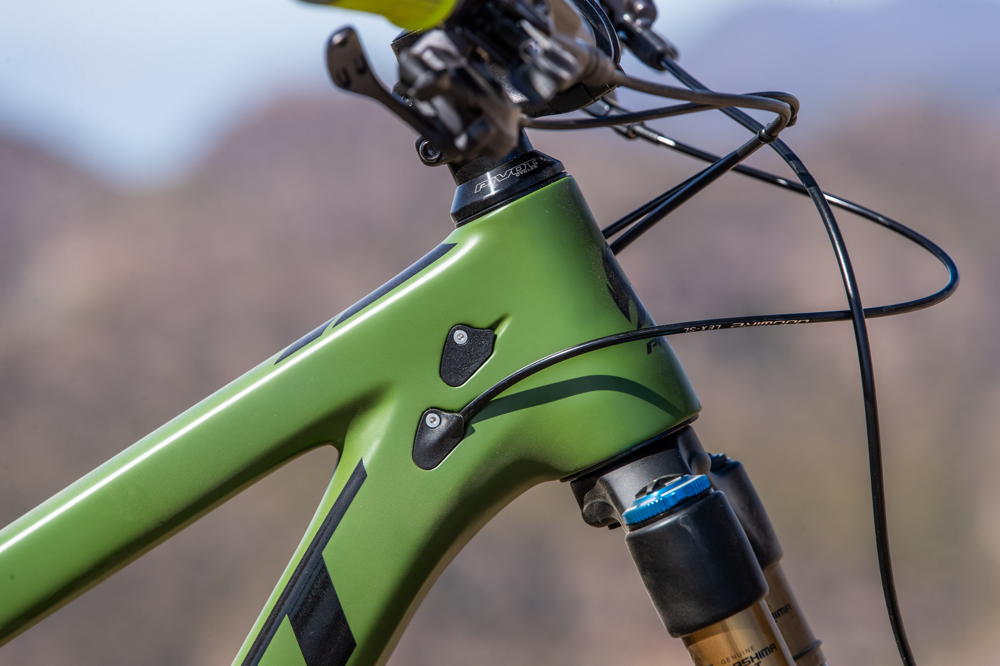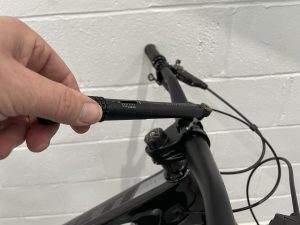Pivot Switchblade 29 is one hard-hitting trail bike that’s been designed to tackle the most challenging terrain
2020 Pivot Switchblade 29 Pro XT/XTR: first ride review
The latest version of the classic Pivot Switchblade 29 trail bike has 142mm travel married to a 160mm Fox 36 fork. Prices start from £5,700.
>>> Best full suspension mountain bike in 2020
Pivot Switchblade 29 need to know
- Comes stock with either 29in or 27.5 Plus wheels, while retaining the ability to switch between both options
- Reconfigured DW-Link suspension with vertical shock position improves standover clearance, allows for longer dropper posts and provides space for a full-size water bottle, even on the XS frame
- New Pivot Phoenix handlebars, stem and grips make for a dialled cockpit with size specific bar widths: 760mm(XS), 780mm(S-L), 800mm(XL)
- Prices start at £5,700 for the Race XT build and top out at £12,400 for the SRAM XX1 AXS bike equipped with Fox Live Valve

Before Chris Cocalis launched Pivot Cycles in 2007 he owned and ran another successful bike company; Titus. And it was there that the original idea for the Switchblade was born.
Back then the Switchblade was a full-suspension bike with adjustable travel, with the short-lived Fox Talas shock providing – in theory – a bike that could be used for XC racing one day, trail riding the next.
And while Chris freely admits that the original Switchblade never really fulfilled its two-bikes-in-one promise, he liked the idea of bikes increasing versatility.

Fast forward to 2016 and the Pivot Switchblade launched amidst a raging wheel size debate. Born again as a 135mm travel trail bike with the option to run 27.5 Plus wheels (with up to 3.4in tyres) or 29in wheels in the same frame. And while Pivot may well have been hedging his bets, as no one knew which way the market would go, the new 2020 Switchblade retains that same duality.
Granted, the rear end on the latest version only has tyre clearance for 27.5in wheels with 2.8in tyres, but some of the features that were pioneered on the previous Switchblade remain. Take the 12x157mm Super Boost hub spacing for example; the wider hub offering more balanced spoke tension, resulting in a stronger rear wheel that is stiffer laterally and more compliant radially.
But a wider rear end means less heel clearance, right? Not so. It’s been my experience on the Pivot Firebird 29, and now the Switchblade 29, that Pivots have arguably the best clearance of any bikes I’ve tested, and that’s even with a regular spaced chainset fitted.

Travel on the latest version has been upped to 142mm and the biggest change, at least visually, is that the shock is no longer inline with the top-tube. The new vertical location offers improved standover clearance while opening up space in the front triangle for a full-size water bottle on the XS frame.
No refresh wouldn’t be complete without making it longer, lower and slacker. Take a closer look at the geometry chart though and the biggest changes in reach have actually been made on the smaller sizes: the XS and S growing by 20mm, the M by 15mm. Then the L creeps up by 10mm, while the XL only increases by 5mm.
The new frame retains the asymmetric suspension chip for adjusting the geometry, and combined with a 17mm head tube spacer, Pivot can mirror the geometry of the 29er on the 27.5in Plus version that sells for the exact same price. But even with the 29er in the low geo setting, the 346mm BB height isn’t particularly low for a 142mm travel bike.

2020 Pivot Switchblade 29 Pro XT/XTR: first ride review
First impressions are important. And two things that instantly struck me about the ride of the new Switchblade were the fit and suspension. So let’s deal with both separately and in that order.
With a 470mm reach on the size L the Switchblade has modern sizing without claiming bragging rights to the title of 29er trail bike with the longest reach.
And while I could comfortably have ridden the XL Switchblade – thanks to the relatively short seat tube and generous standover clearance – at 5ft 11in I really shouldn’t be on the biggest bike that Pivot produces.

Also this is a trail bike, not an enduro-race 29er. As such, it’s designed to ride trails that aren’t simply up fire roads and straight down the steepest part of the mountain. So you need to be able to keep the front end loaded on trails with a mellow gradient. With the short 431mm rear end, the size L didn’t just fit well, the weight distribution between both contact patches of the tyres was spot on too.
I could apply enough load through my feet to keep the front tyre weighted, so it didn’t push through on flatter corners, and the bike wasn’t so long that I struggled to get off the back when needed. If the front end were longer or slacker that balance could easily be upset, and it begs the question, should the XL have a longer rear end? The short answer is, probably.
Now let’s take a closer look at the suspension. With a 160mm travel Grip 2 Fox 36 up front the Pivot certainly isn’t lacking in steering precision or control. In fact, the 36 chassis should be the go-to platform for 29er trail bikes due to the increased leverage the bigger wheels place on the fork. And when Fox introduces the 38 for enduro bikes, I’m sure that we’ll start to see the 36 on bikes with 140mm travel.

It’s the rear suspension where the real progress has taken place though. Pivot worked closely with Fox to develop valving for the DPX2 shock that makes it less prone to choking on high-speed hits. It’s a big improvement, but Pivot has negated some of the benefits by making the spring curve too progressive. The shock comes stock with the 0.6in volume spacer, and even with the correct sag achieved with the neat sag indicator, I wasn’t able to use the final 10mm of shock stroke. On the second day of riding I went down to a 0.4in spacer and things improved, but I still couldn’t get the full 142mm travel, so probably the 0.2mm spacer would have been spot on.
And it makes complete sense. Pivot has made DW-Link suspension on the Switchblade more progressive so you have the option to fit a coil shock, so it shouldn’t need the bigger volume spaces in the air shock. Granted, lighter riders running lower shock pressures, or faster, more aggressive riders, may need extra bottom out resistance, but the stock combination is too progressive for regular riders to make effective use of all the available travel.
Fitting a smaller volume spacer is an easy, inexpensive fix though, unlike the Shimano brakes. I’m now convinced that a big part of the problem with Shimano’s variable bite-point is that the rotors continually reset the pistons in the calipers as you ride. This was really noticeable and annoying on the trails in Gran Canaria, as the imbedded volcanic rock knocked the wheels about more than normal, resetting the pistons frequently. And when grip is in short supply, the last thing you want is to be guessing when the brakes are going to kick in.
The Shimano brakes are the only issue with an otherwise flawless specification though. The new Pivot Phoenix bar, stem and grips are on the money. The Reynolds carbon wheels and Maxxis tyres are first rate and the Shimano drivetrain never missed a beat, though we did find out that the carbon outer jockey wheel plate on the XTR derailleur does not like flying rocks.
Ultimately, I’d like more time to get the rear suspension on the new Switchblade dialled to my liking, as I was just getting to grips with it on the loose, rocky terrain when it was time to go home. The extra shock progression was not enough to detract from the overall ride quality of the bike, though. The Switchblade 29 is one hard-hitting trail bike that’s been designed to tackle the most challenging terrain. And while it could easily turn its hand to a spot of enduro racing, it retains the agile handling of a precision instrument.
















